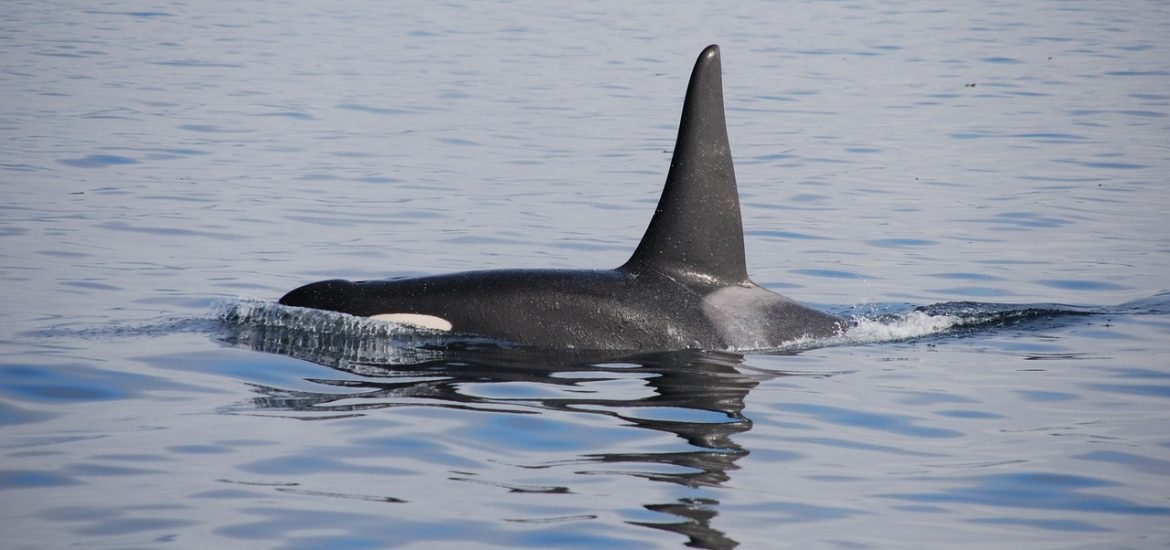
Researchers found a safe area for orcas in the Northern Pacific, where these animals have lived for the past 20,000 years, according to a study published in the scientific journal Marine Mammal Science.
An area in the Northern Pacific — near Russia and Japan — is home to several groups of orcas. However, despite living in a relatively small area, these groups don’t have any contact with each other, don’t eat the same food, speak the same “language,” or even mate with each other. This has been a mystery for a long time. How can they live so close and have no contact?
Now, a team of biologists from the University of Southern Denmark want to find out more. With this in mind, they decided to explore the link between orca culture and how they colonised the North Pacific. The team used DNA samples taken, skin biopsies, and analyses of sounds made by animals recorded with underwater microphones. It turned out that orca pods currently living near Nemuro Strait (Japan) are descendants of the orcas that settled in this area during the last ice age, about 20,000 years ago. This location was chosen because it is safe, and orcas have been there living since.
“Orcas are conservative and tradition-bound creatures who do not move or change their traditions unless there is a very good reason for it. We see that in this population,” says Olga Filatova.
This is not the only safe place Filatova has found. There’s another one located near the Aleutian Islands, about 2500 km away. These pods are just as conservative as their Japanese relatives and are also descendants of ice-age animals who found refuge in these waters.
“When the ice began to retreat again, and orcas and other whales could swim to new ice-free areas, some of them did not follow. They stayed in their refugia, and they are still living there,” said Filatova. “Orcas in the Nemuro Strait had unusually high genetic diversity, which is typical for glacial refugia, and their vocal repertoire is very different from the dialects of orcas living to the north off the coast of Kamchatka. Kamchatkan orcas are most likely the descendants of the few pods that migrated west from the central Aleutian refugium, that’s why they are so different”.
Orcas’ vocalizations can vary widely, and no two pods make the same sounds. They have, in fact, their own language. This means these sounds can be used to identify which pod individual animals belong to. “When we combine this with genetic analyses, we get a strong idea of how different orca communities relate to each other,” explained Filatova.
Based on the behaviour exhibited in these safe places, researchers can speculate about how orcas will behave to cope with increasing changes due to climate change: orcas will move north as the ice melts, but this will happen in small groups at a time, not as a massive move with all animals.
The discovery of these safe places also highlights how orcas don’t fit neatly into one species. “Many believe that orcas should be divided into several species. I agree – at least into subspecies because they are so different that it doesn’t make sense to talk about one species when discussing their place in the food chain or when allocating quotas to fishermen,” said Filatova.
For example, some orcas only eat herring, while others prefer mackerel or salmon. Some pods only eat marine mammals, while other eat anything they can find. This diet can have a significant impact on fishing quotas, for example. To calculate fishing quotas, each country must consider how many fish are naturally eaten by predators. Orcas consume 50-100 kg of fish in a day, which can affect the quota calculation.
At the moment, there is only one recognised species of orca, but researchers have developed ways to classify different groups. So far, there are three recognised groups in the northern Pacific, but there are probably more – perhaps up to 20 different ecotypes, according to Filatova. “We need to know the different ecotypes. Orcas are at the top of the food chain, and it affects the entire ecosystem around them, what they eat, and where they do it,” said the researcher.
In Danish waters, close to the University of Southern Denmark, orcas can be spotted occasionally. However, no one knows what they eat and how they affect the food chain and fishing. “I look forward to learning more about them. Maybe they turn out to belong to a new ecotype,” concluded Filatova.
Filatova O, Fedutin I, Borisova E et al (2023) Genetic and cultural evidence suggests a refugium for killer whales off Japan during the Last Glacial Maximum. Marine Mammal Science, https://doi.org/10.1111/mms.13046